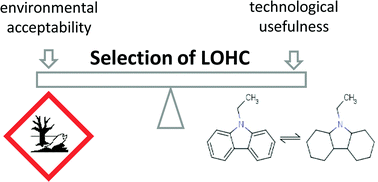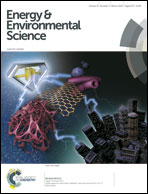Environmental and health impact assessment of Liquid Organic Hydrogen Carrier (LOHC) systems – challenges and preliminary results†
Abstract
Liquid Organic Hydrogen Carrier (LOHC) systems offer a very attractive way to store and transport hydrogen, a technical feature that is highly desirable to link unsteady energy production from renewables with the vision of a sustainable, CO2-free, hydrogen-based energy system. LOHCs can be charged and discharged with considerable amounts of hydrogen in cyclic, catalytic hydrogenation and dehydrogenation processes. As their physico-chemical properties are very similar to diesel, today's infrastructure for liquid fuels can be used for their handling thus greatly facilitating the step-wise transition from today's fossil system to a CO2 emission free energy supply for both, stationary and mobile applications. However, for a broader application of these liquids it is mandatory to study in addition to their technical performance also their potential impact on the environment and human health. This paper presents the first account on the toxicological profile of some potential LOHC structures. Moreover, it documents the importance of an early integration of hazard assessment in technology development and reveals for the specific case of LOHC structures the need for additional research in order to overcome some challenges in the hazard assessment for these liquids.


 Please wait while we load your content...
Please wait while we load your content...